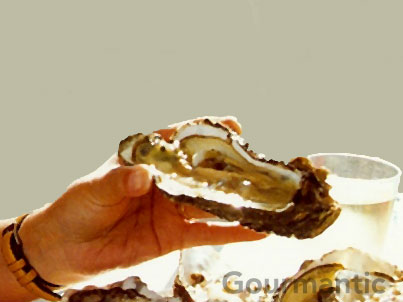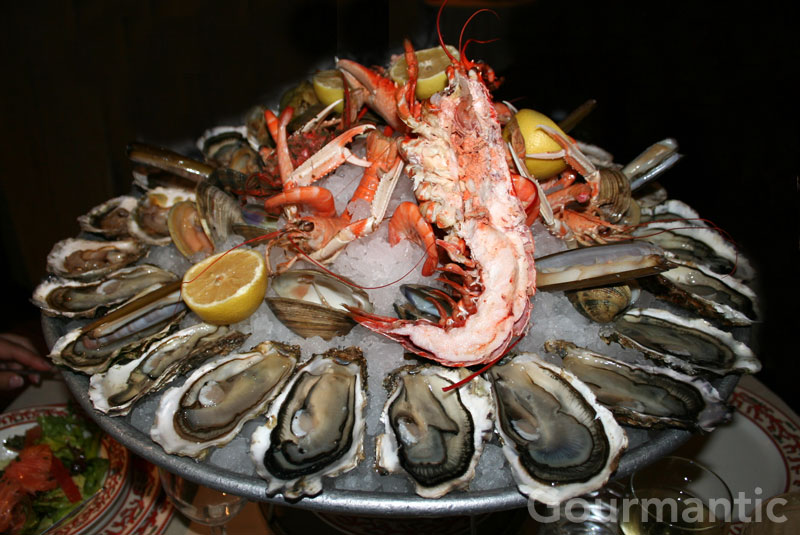They laughed in my face. “You want to eat oysters in July?”
I nodded. And why not? We were adamant to drive from the coastal town of La Rochelle on the west coast of France to the area known as Marennes-Oléron, the oyster capital in the south west.
“They will laugh at you,” Madame and her husband met me with a shrug. “On ne mange pas des huîtres pendant les mois sans ‘R’.”
Madame, who is also my dear cousine and a resident of the Charente-Maritime region explained that in France, they only eat oysters during the months that have an “r” in them.
It was my turn to laugh. “Ce n’est pas vrai!” Was she joking at our expense? “Mais non! Ask anyone here.”
It soon became apparent that this notion dates back to the nineteenth century in order to protect the oyster production at the time. But there is still merit in it today. Being in their reproductive cycle during the summer months, the oysters are milky and fatty and lose much of their flavour. The French don’t enjoy their oysters when they’re grasses.
But we stuck to our programme and drove our Renault hire car on the E602/D733/D123 motorways south of la Rochelle to Marennes.
Along the shores of the Atlantic coast, oyster production was in bloom. The oysters are said to be bred out at sea then brought to the claires, or the shallow basins to mature. They are given a classification by size ranging from 0 (the largest) to 5 (the smallest). The most popular is 3 and it is the most common that we have seen in shops and restaurants. They also have a nomenclature based on the length of time they are left to mature and the number of oysters per square metre *.
- fines de claires – 1-2 months in the basin; 40 oysters per square metre.
- spéciales de claires– 4-5 months in the basin, 5-10 oysters per square metre
- spéciales pousse en claire Label Rouge – 4-8 months in the basin, 5 oysters per square metre
We continued along a winding road that hugged the bassin and found a little shack that sold huîtres sur place.
We sat under a parasol on plastic modular chairs and matching table. The oysters were shucked on order. Our fines de claires were served with slices of bread and lemon wedges. Two glasses of chilled white wine accompanied the tasting. We clinked our glasses and toasted to our dégustation in the heart of the oyster farming capital. Then we drank our first oyster, each was the size of my palm.
Upon our return to La Rochelle, we were quizzed by Cousine. “So, you ate oysters today? You liked them?” she asked tapping her foot. I hesitated to tell the truth. “They were comme-ci comme-ça,” I replied, tilting my hand back and forth. They satisfied my curiosity but they were fairly average.
On subsequent trips to France, which incidentally fell during months that have an “r” in them, we were blown away by the taste of oysters. Restaurants in Paris display their seafood outside their premises, with a resident écailler on board chucking oysters on demand and preparing the fresh seafood. Unlike at home in Sydney, oysters are always served with their juices intact on a bed of ice, not rinsed under water which alters the taste dramatically. They are silky in texture with a salty freshness rich in iodine. No accompaniment is required, not even a tiny squeeze of lemon. Just hold the oyster shell in your hand and you’ll be drinking the sea.
As for which is the best wine to drink with these oysters, any good Charentais would recommend Le Muscadet de Sèvre-et-Maine, for its dry acidic yet fruity notes that complement the iodine taste of the oyster.
Bon appétit!
Platter of fruits de mer, from Le Bar a Huîtres, St-germain, Paris.
* Oyster Information from http://www.huitresmarennesoleron.info/










ah…oysters. I stopped eating them for awhile due to a few mediocre ones, but my love for them was renewed last year when I had them with a visiting friend (probably in an ‘r’ month since that’s been drilled into me living here!) In fact, I don’t think i’ve ever tasted them in a non-r month here, so good to have a comparison! Great pics, too! thanks!
Thanks! I’m glad you’ve rediscovered their enjoyment. You’re so lucky in France to be able to buy them unopened. If I lived in France, I’d do as the French and save them for the ‘r’ months. I can never get enough of seafood when I’m in Paris!
[…] more gourmand tastes, unopened oysters from Marennes, the oyster capital of France. Remember to only eat these during months that have an ‘R’ in […]
[…] region prides itself on the best in seafood, specifically oysters, huitres from Marennes. Unfortunately, due to being late, not may restaurants can accommodate such a large group […]
[…] oysters of France, shucked on demand. If you are on oyster fanatic and you’re in Paris during a month that has an R in it, this is the place to […]
Ah yes ! I ate my first raw oysters, probably Marennes in La Rochelle in September 1961 at the Chapon Fin in the Hotel de la Paix (now a tearoom I believe). Anyway, Bar Andre is still there and probably still offers up a nice variety of huitres.
That’s lovely when old favourites are still around and they trigger the memory of a first culinary experience!
[…] duck liver served with toast and best enjoyed with a glass of Sauternes. When in season, and during months with an ‘r’ in them, try les huîtres preferably fines de claires. The oysters are shucked on demand and taste of the […]